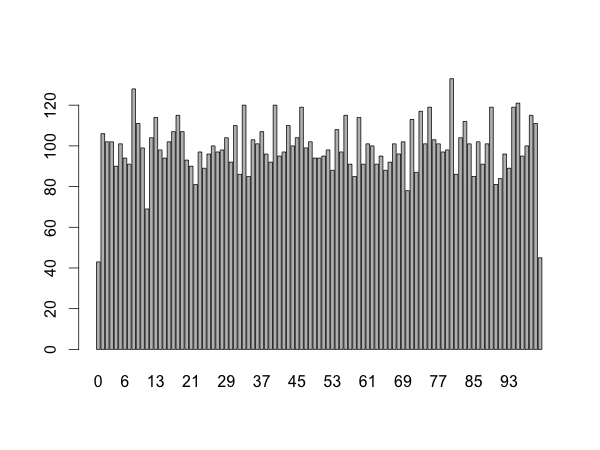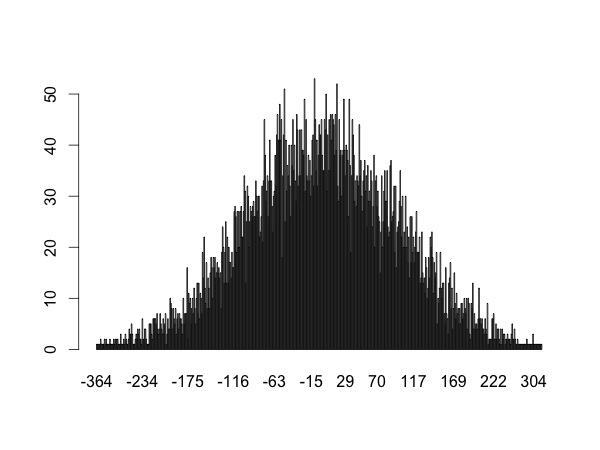Use source("filename.r") to run this.
#utility functions
readinteger <- function()
{
n <- readline(prompt="Enter an integer: ")
if(!grepl("^[0-9]+$",n))
{
return(readinteger())
}
return(as.integer(n))
}
# real program start here
num <- round(runif(1) * 100, digits = 0)
guess <- -1
cat("Guess a number between 0 and 100.\n")
while(guess != num)
{
guess <- readinteger()
if (guess == num)
{
cat("Congratulations,", num, "is right.\n")
}
else if (guess < num)
{
cat("It's bigger!\n")
}
else if(guess > num)
{
cat("It's smaller!\n")
}
}
> source("random-number-game.r")
Guess a number between 0 and 100.
Enter an integer: 50
It's smaller!
Enter an integer: 20
It's bigger!
Enter an integer: 40
It's bigger!
Enter an integer: 45
It's smaller!
Enter an integer: 43
It's bigger!
Enter an integer: 44
Congratulations, 44 is right.
The readinteger function has been explained in a previous example.
Rounding
The round function rounds the first argument to the specified number of digits.
> round(22.5,0) # rounds to even number [1] 22 > round(3.14,1) [1] 3.1
Getting a random number
runif generates random numbers between 0 and 1.
The first argument specifies how many numbers you want.
runif(2)
[1] 0.8379240 0.1773677
The "unif" part of the function indicates that the numbers are uniformly distributed:

This isn't completely uniform at the sides because of our use of round. A round to 0 only happens between 0 and 0.5 because we don't have negative numbers.
A non-uniform normal distribution would look like this:

Learn how to make these graphs here.